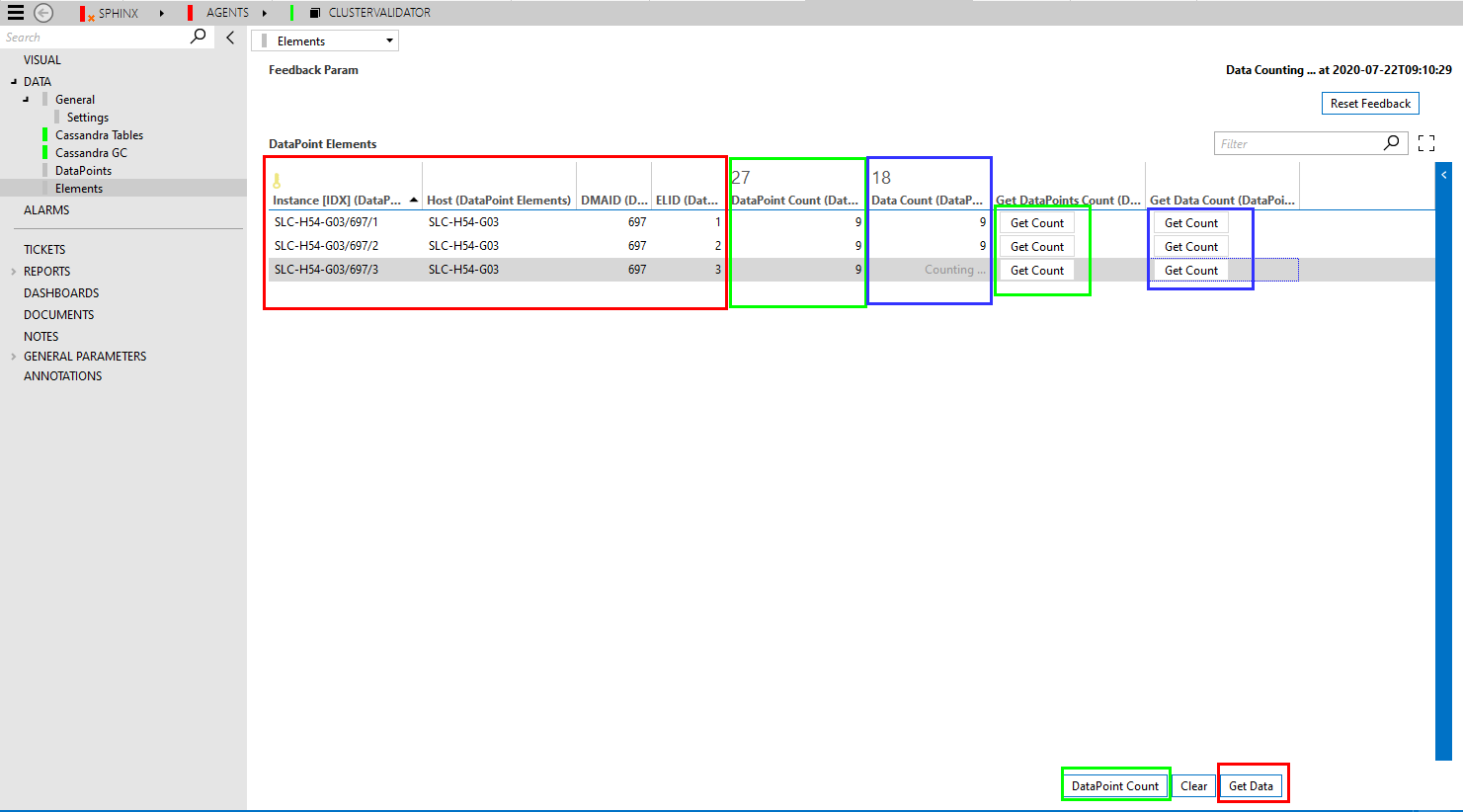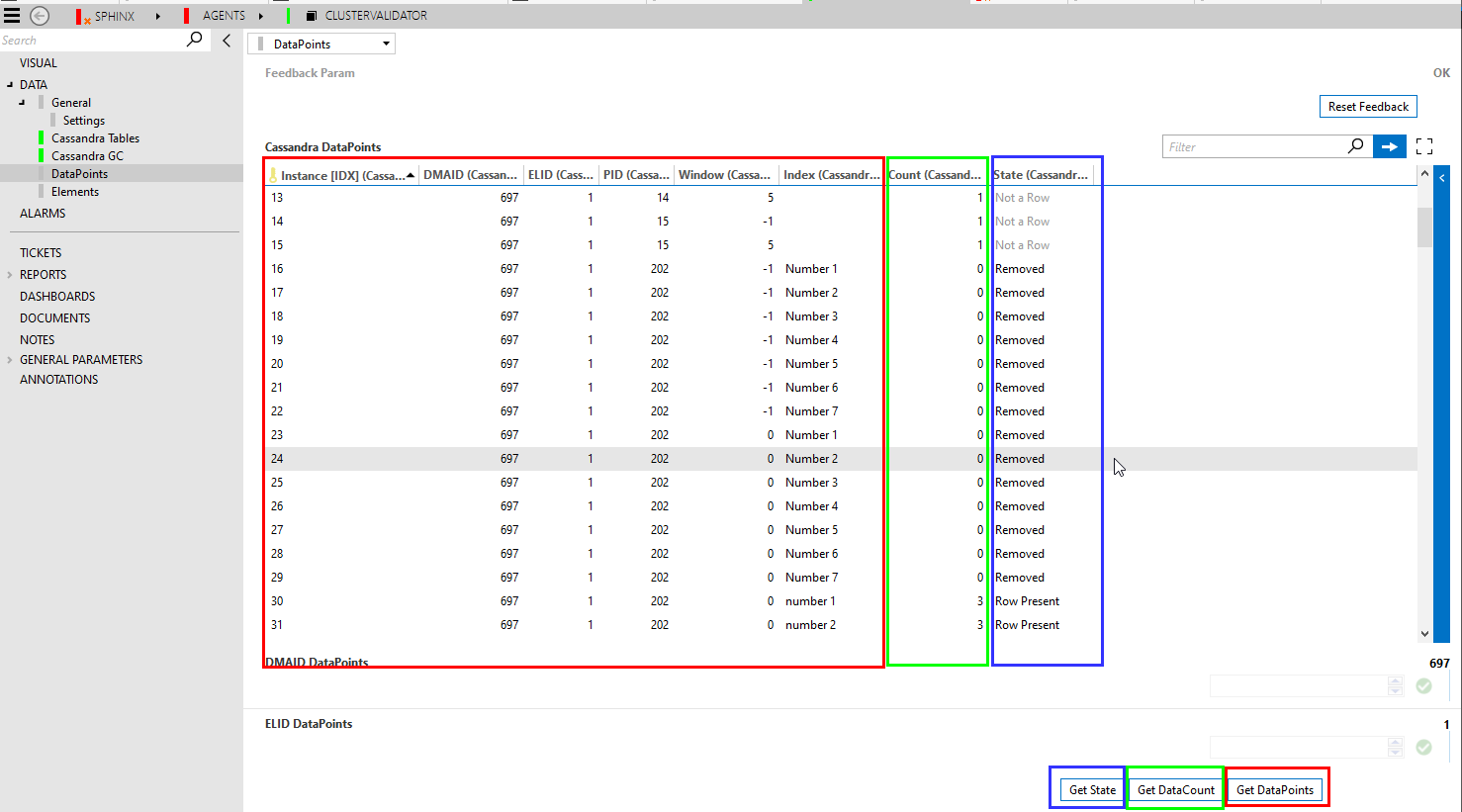When using a MySQL database, it was possible to run queries against system tables to find the elements with the highest impact on the database (in terms of size and number of rows). Is this also possible when using Cassandra?
I don’t know about a certain query to easily show you such data, there could be such a query, but I’m no CQL wizard.. (maybe ask the Cassandra Champion?)
We tend to use the Cassandra Cluster Validator to see which element holds the most data and has the most datapoints (Elements page in the element).
If you decide to create such an element, be sure to check the driver help, as quite some things could go wrong.
When retrieving this data, know that it can take a while before you get results (might take hour(s)).
To inspect the impact of certain elements on your DB you can use the ‘Skyline Cassandra Validator‘.
You can see in below screenshot an example of a DMA that holds 3 elements on which Trending is enabled.
When clicking the red button all elements from your configured DMS (under General Page) will be retrieved and listed in this table.
When clicking the green button you will start to count the amount of cells (stand-alone or cells in a table) that is trended.
Note: It could be that rows that do no longer exist but were removed before the TTL will also be counted.
You can also go one step further and count all datapoints that are in DB for a certain element (blue button), keep in mind that if you have a lot of trending that this can take a while and will put load on your DB.

If you want to go deeper into what trending is stored inside an element you can go even deeper (see screenshot below).
You can request all cells that are trended with the red button (after filling in the DMA en ELID) for a certain element.
With the green button you can find out how many datapoints are stored in DB for those datapoints.
When clicking the blue button you can see if the row still exists (if it is a row).

Thanks Robin. I’ve also asked to the Cassandra champion, and he agrees with your answer of using the Cassandra Validator instead.